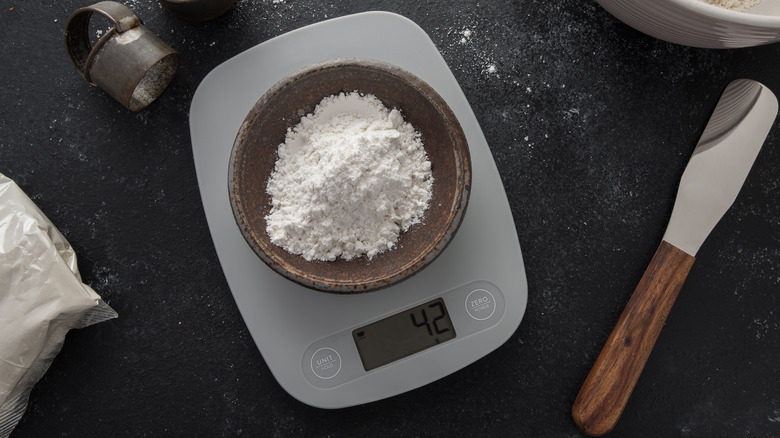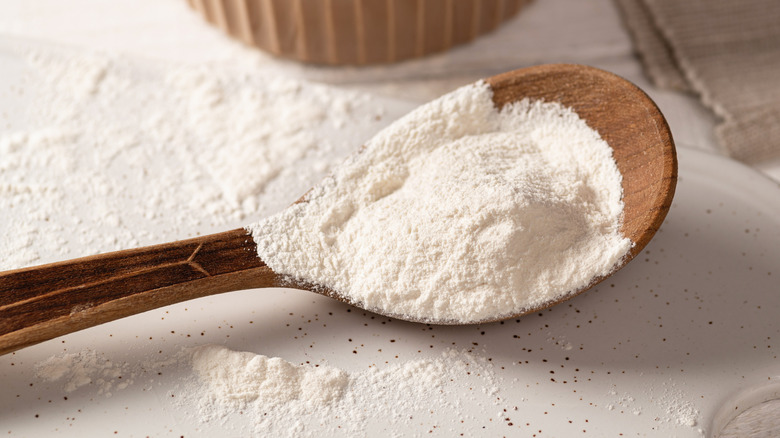Why Fluffing Flour Before Baking Is So Important
You've followed the recipe step by step, measured out every ingredient exactly, set the timer on the oven, and yet, your baked goods still aren't turning out right. If this scenario sounds all too familiar, there's a pretty good chance you're skipping one crucial step: fluffing the flour. This might seem like a frivolous part of the baking process, but according to Allrecipes, it's the key to measuring flour with precision, and it makes all the difference in the outcome of your dessert.
The reason fluffing your flour is so important, Allrecipes explains, is that flour is typically measured by volume. It's also prone to compression, meaning it can easily become packed together, leaving no air in between the particles. A packed cup of flour contains more flour than one that has been fluffed, so even if you manage to fit it all in the same vessel, your measurements will technically be off. Unless you're using a kitchen scale, the most accurate way to measure flour for a recipe is by fluffing it first.
How to properly fluff flour
You may have seen sifting flour as a step in a recipe, but contrary to popular belief, it isn't the same as fluffing. Epicurious explains that sifting is done in order to combine ingredients that lend themselves to clumping together, such as cocoa powder, powdered sugar, and flour. This step occurs after measuring, and not all recipes require it. Fluffing, on the other hand, is necessary any time you add flour to a recipe because its purpose is to aerate — not to combine — with other ingredients.
To properly fluff your flour, Baking Kneads suggests a large spoon or a thin spatula for the job. Stir the flour around until there's enough air incorporated and the flour no longer looks compressed. At this point, you might be tempted to go ahead and scoop up the flour with your measuring cup, but this has the potential of undoing what you just did. Instead, just spoon the flour into the cup until it overflows, and even it out with a butter knife. If you do this every time you bake with flour, your results are bound to be precise every time.

